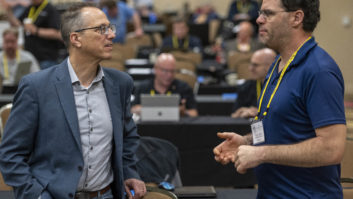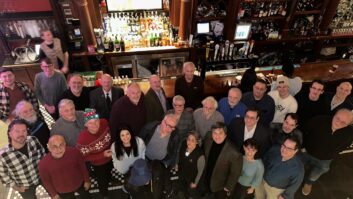Engineers looking for practical answers to real-world issues facing their stations will find plenty of solutions at the NAB Radio Show on Wednesday morning, Sept. 26. The SBE Radio Engineering Forum takes place 8 a.m.–noon.
“The general goal is to look at technology-based topics, but to approach them from a practical level, instead of the theoretical,” said Chriss Scherer, president of the Society of Broadcast Engineers, which is sponsoring the forum.
With HD Radio on the minds of engineers everywhere, it’s no surprise that HD-related topics will be a big part of the morning’s agenda. The session will begin with an “HD Radio Technology Update” from Ray Miklius, vice president of Broadcast Electronics. Miklius says there are several advances in the HD field that engineers should know about, including new applications for excess data capacity on HD signals for purposes such as traffic data and “large object transfer,” sending data to devices like taxi-top advertising signs and billboards.
Conditional access has been another hot HD topic, Miklius says, along with new electronic program-guide technology that will allow listeners’ receivers to display up-to-date program information.
“Hopefully there will be some announcements of some other new technology that the data channel can support,” Miklius said.
Later in the morning, Tim Holt of Bird Electronic Corp. will discuss “VSWR Measurements in Broadcast Systems,” and Ben Brinitzer of Clear Channel in Charlotte, NC will discuss “The Pitfalls and Procedures of HD Radio Measurements.”
As engineers learn more about working with HD Radio and other digital broadcast systems, Scherer says the SBE is responding by introducing a new specialty certification program. Along with Ralph Hogan, chairman of the SBE’s DRB Specialist Certification Committee, Scherer will discuss the group’s upcoming “Digital Radio Broadcast Specialist” certification.
“It’s geared for someone working at a station who’s implementing, installing or maintaining HD,” Scherer said of the program, which will be formally introduced at SBE’s national meeting next month in Pittsburgh.
After a short break, attention will turn to another hot topic: audio processing for HD Radio, as two of the field’s leading names, Orban’s Greg Ogonowski and Omnia’s Frank Foti, talk about what they’ve learned over the last few years.
“It’s about having a good understanding of what you’ve got to do in audio with today’s transmission methods,” Foti said of the session. A key aspect, he believes, is “preconditioning” the audio to present fewer challenges to the complex encoders that compress digital audio to fit in limited bandwidth. With products such as Omnia’s Sensus preconditioner, Foti said, “once we hand the audio off to the codec, we reduce the artifacts people will hear.” He says that’s become a growing challenge for FM HD broadcasters as their model has changed from a single audio stream using their full 96 kbps bandwidth, to multicasters who often try to fit as many as three audio streams in the same space.
“In the 96 kbps domain, we had much less severity of coding artifacts going on,” Foti said.
While HD has become established in many larger markets, Foti says there’s still plenty of work to be done.
“We’re definitely still talking to people in the beginning stages [of HD conversion],” he said. Broadcasters are also still learning how to work with the delays inherent in the HD system, Foti said. He’ll address some new techniques that allow HD broadcasters to more gradually ramp in and out of delay, particularly if they’re carrying live sports broadcasts.
Additional sessions at the forum will include “STL Considerations for HD Radio,” with Kevin Campbell, European sales manager of APT, and a session on “Practical Implementation of PAD (PSD)” data.











